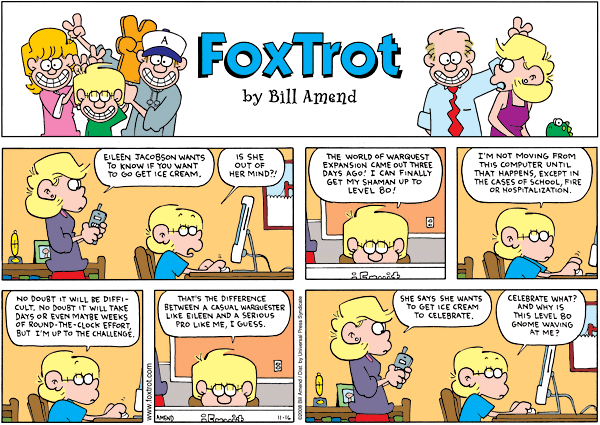Abortion: The Right to Decide
1 May 2009
Gender and Technology
Anne Dalke
The Right to Decide
After reading The Handmaid’s Tale by Margaret Atwood, I found myself contemplating the freedoms I enjoy as a woman and the choices which I am able to make. It is hard for me to picture myself living in the world Offred lives in and adhering to those rules. I could not think of myself as nothing more than a walking, talking womb ready to be filled at any moment. Then I thought that there are people who feel that way about women today. They feel that family planning, abortion, and any other reproductive right a woman has are ways of disrupting the natural order of the world. When a woman becomes pregnant, no matter the circumstances “according to one tradition, early human life is inviolable from the moment of conception” (Little). In The Handmaid’s Tale abortion is illegal, the women who get them and the doctors who perform them are to be considered “war criminals” of the worst sort (33). I hope to show the benefit of having reproductive choice over living in a society which does not value those freedoms using two articles from the BBC, Margaret Little’s arguments on abortion ethics, and the example of society in The Handmaid’s Tale.
On Wednesday, March 4, 2009, a nine-year-old girl aborted the twins she conceived from the repeated rape by her stepfather (Duffy, Rape Row Sparks Excommunications). The abortion laws in Brazil are already very strict allowing them only in cases of rape or if there is concern for the woman can die as a result of pregnancy, which this little girl met both criteria as “her uterus did not have the ability to contain one child let alone two” (Duffy). “Now a Church spokesman says all those involved, including the child’s mother and the doctors, are to be excommunicated” (Duffy) even though this is a horrifying case where the stepfather is not being excommunicated and the procedure was considered a legal one (Duffy, Abortion Row Shakes Brazil Opinion). Where is the line drawn? Which behavior is considered the worse one? The Catholic Church made itself clear that in order to preserve human life it is acceptable to remove people from their church which should be comforting them in a difficult time. Cardinal Scherer explained the church’s position in an interview.
[We should] do everything possible to ensure life is protected, because no matter what happened to create this life, even if it was through violence, it will always be considered a human being, a helpless and defenseless human being. I can understand how a woman who is carrying a baby after being violently raped feels, but there is always a possibility to help this woman to cope with this situation. There are many ways today that the medical profession can help to save the lives of this woman and child. (Duffy, Abortion Row Shakes Brazil Opinion)
What he failed to realize is that this is not a case of a “woman,” this is a child. She had no choice in the trauma that she went through and she should have the blessing of her church and the option to not have children when she herself is a child. And even if she were an adult, an option to “cope with this situation” could be abortion after a moment in time when her right to decide to have sex was stripped from her.
Margaret Little uses the arguments of two extreme sides on abortion and attempts to find a moralistic middle ground which, though it may not satisfy everyone, should make at least legal sense. I took her argument as that of granting women the choice because “the fetus has no trajectory independent of the gestational assistance the woman provides” and with that pregnancy (and the motherhood that usually follows it) is “a violation of our autonomy, the dominion we have as beings capable of self-governance” (Little 336). Exploring a different path, Little also adds that “even at early stages, human life has a value worthy of respect. Miscarriage or abortion represents loss” (342). But in The Handmaid’s Tale this loss is viewed as a crime, but it is only considered a loss of a potentially active member in society. The Republic of Gilead’s methods could be argued to be less moral as they kill what they call “unbabies” or babies born with what would be considered defects and while Offred did not know what would happen to them she knew that “they were put somewhere, quickly, away” (Atwood 113).
There is no decision in how the baby was conceived, no decision as to where the baby goes when it is born because the handmaids were only there to birth the children. It did not matter because “you can’t have them taken out; whatever it is must be carried to term,” even if that means the death of an imperfect baby (112). Which is worse, getting rid of a baby that has already been born or aborting an unwanted fetus? The truth is, that is why these technologies are invented. It is neither for promoting promiscuity nor for taking a life. They were invented to help women gain their autonomy. When religion or government interferes with that autonomy then it shows that people truly only consider women empty wombs to be filled. We are close to living in a Republic of Gilead of our own if the right to make a decision about birth control, contraceptives, the morning after pill and abortion are taken away.
Works Cited
Atwood, Margaret. The Handmaid’s Tale. Anchor Books, 1998.
Duffy, Gary. “Abortion Row Shakes Brazil Opinion.” 2 April 2009. BBC News. 2 April 2009 .
—. “Rape Row Sparks Excommunications.” 5 March 2009. BBC News. 7 March 2009 .
Little, Margaret. “Abortion and the Margins of Personhood.” Rutgers Law Journal (n.d.): 341 – 348.
